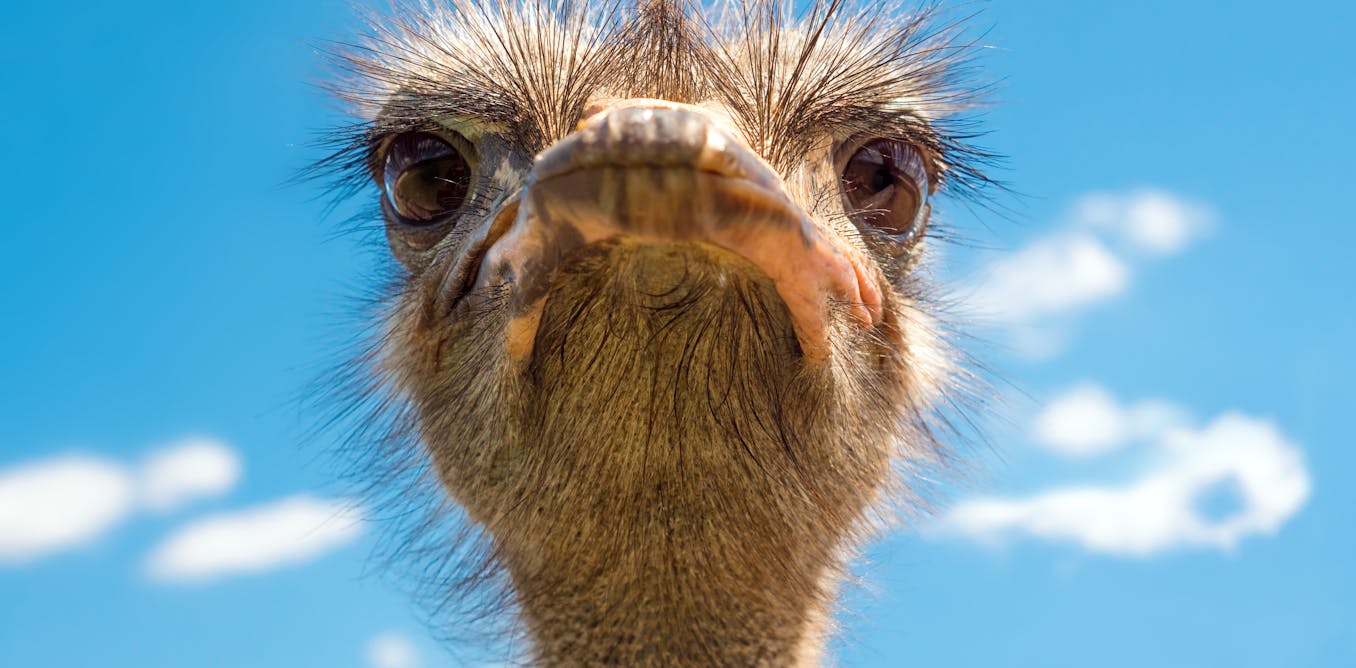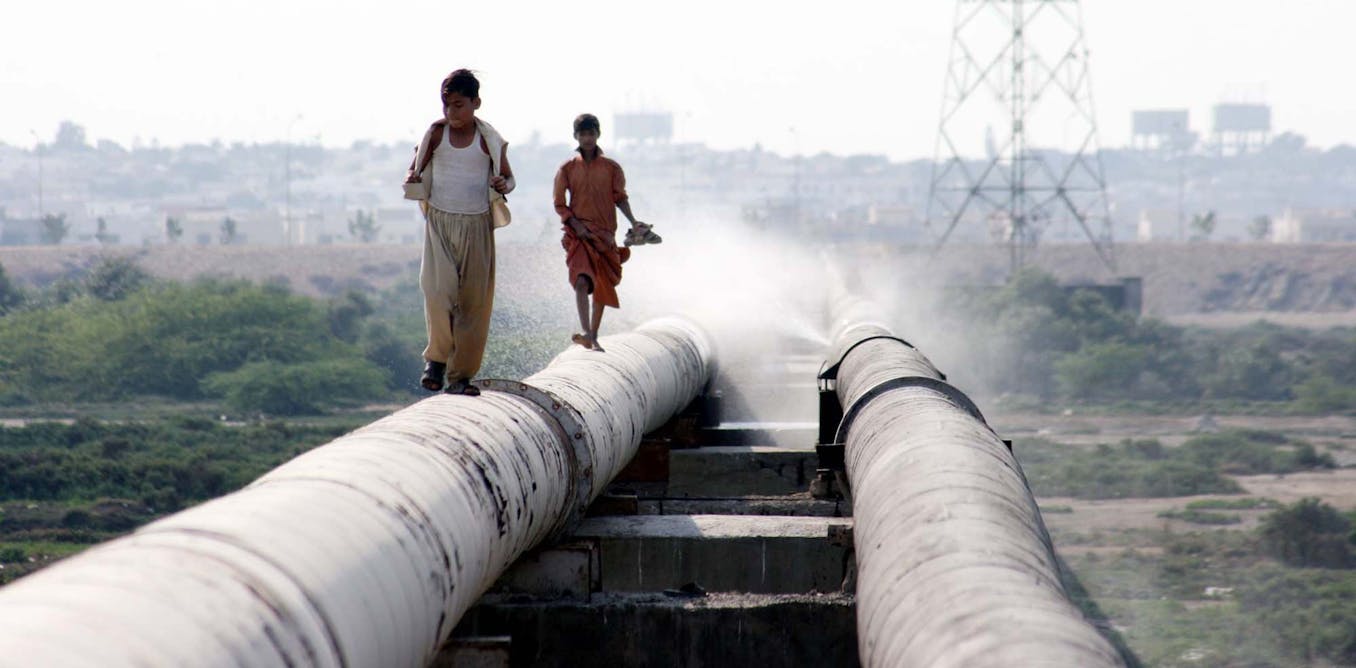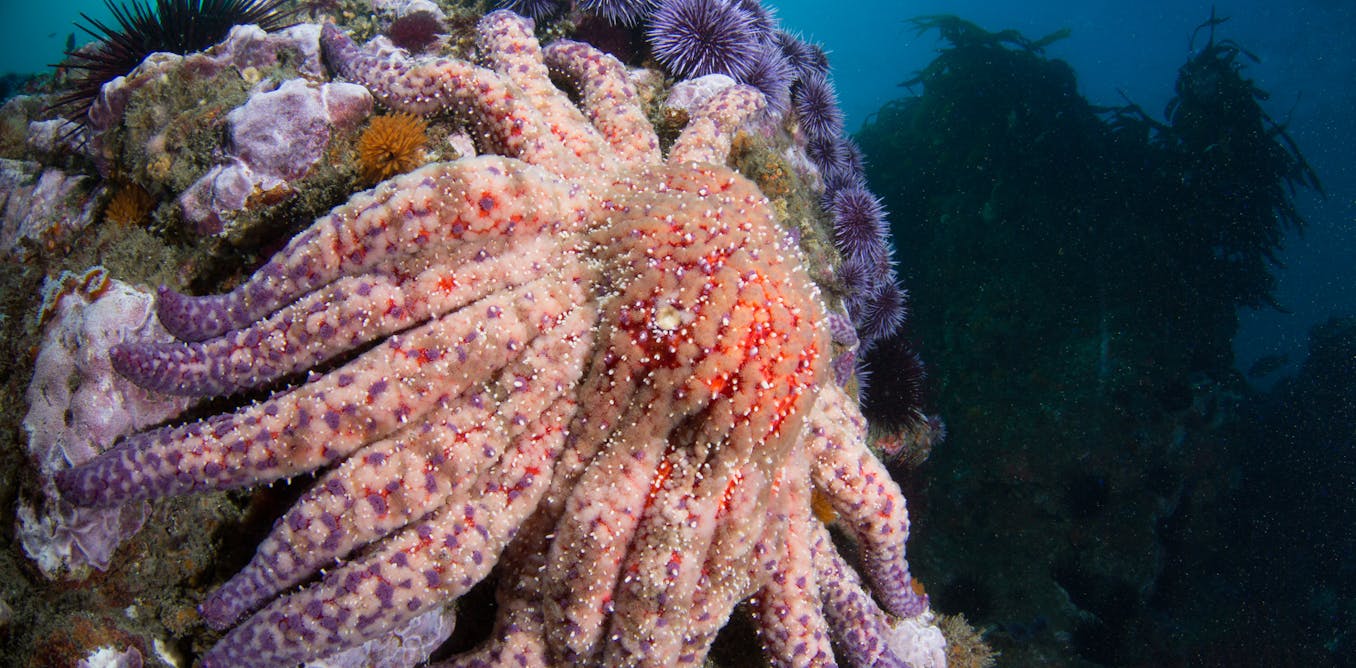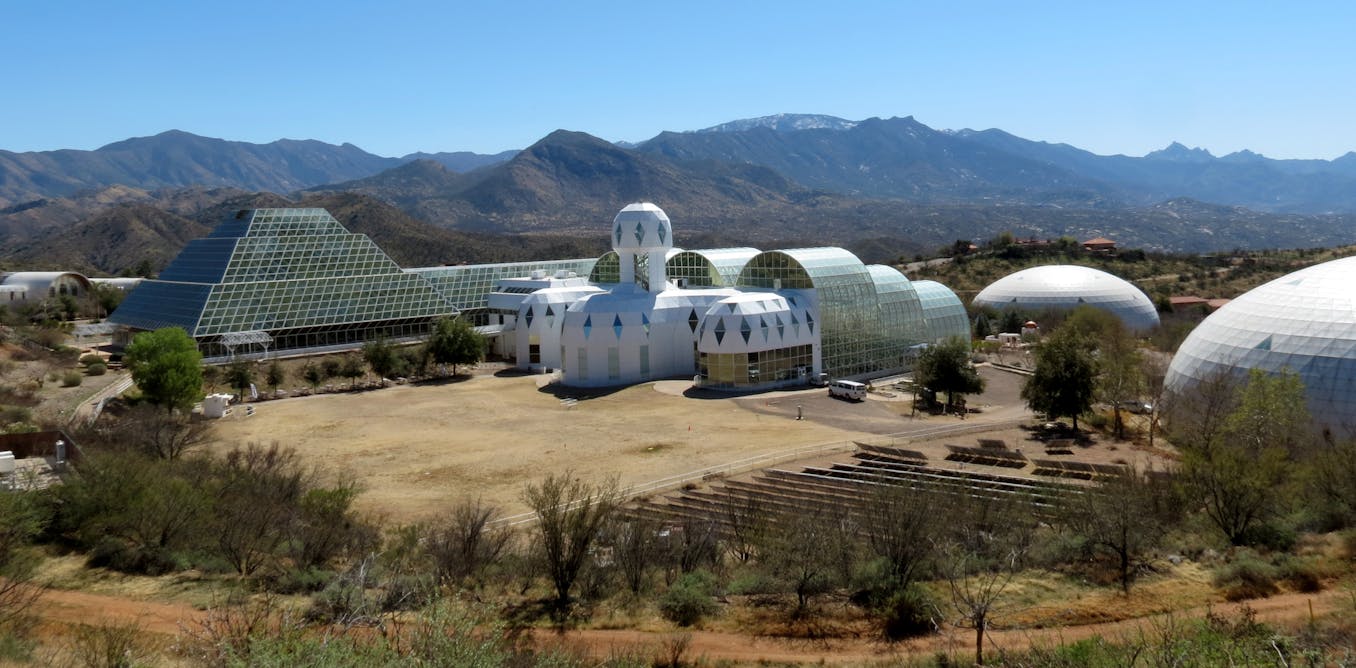Russian President Vladimir Putin is laying claim to 1.2 million square kilometers in the Arctic. His main objectives appear to be the colonization of the Arctic and of the North Pole. It’s a project more than 20 years in the making.
This area, which remains virtually unexploited, is one of the last El Dorados on the planet. The subsoil is full of oil, gas, rare earths and precious minerals like gold, uranium, and copper. With global warming and the melting of the ocean’s ice, these riches are now more accessible, fueling the greed of major Western powers.
But in this conquest of the Arctic, Russia already has a head start. For years, the country has been equipped with gigantic nuclear-powered icebreakers, which have been used to help navigate the icy waters surrounding the North Pole. In addition, Vladimir Putin has invested in extraordinary industrial projects. One such project is an enormous gas processing plant anchored in the permafrost; another is the construction of an incredible floating nuclear power plant intended to supply energy to Pevek, a small, isolated port north of the polar circle. These are but a few examples of the Russian leader’s flagship projects, in this new conquest of the Arctic.
For Moscow, this policy also involves a militarization of the region. Fearful of these expansionist ambitions, NATO decided to react by sending a strong message to the Russian President. The Atlantic Alliance recently gathered of an army of 35,000 men in Norway to show that it could repel a possible Russian invasion at any given time.
#documentary #dwdocumentary
______
DW Documentary (English): https://www.youtube.com/dwdocumentary
DW Documental (Spanish): https://www.youtube.com/dwdocumental
DW Documentary وثائقية دي دبليو (Arabic): https://www.youtube.com/dwdocarabia
DW Doku (German): https://www.youtube.com/dwdoku
DW Documentary हिन्दी (Hindi): https://www.youtube.com/dwdochindi
Beyond the Arctic Circle in Russia, a 35-meter-tall Soviet soldier watches over the city of Murmansk. Located in the northwest of the country, Murmansk is home to the largest port in the Russian Arctic. A huge naval base is here, accommodating half of all the navy’s nuclear submarines and a fleet of nuclear icebreakers.
In 2019, the city celebrated the launch of the world’s first floating nuclear power plant — the Akademik Lomonosov. Among the senior state officials attending the ceremony was Alexey Likhachev, head of the Russian state nuclear energy corporation, Rosatom, and former deputy economy minister under Vladimir Putin. Good morning, dear guests, friends, and colleagues.
Today is a great day — the launch of the Akademik Lomonosov! It’s a one-of-a-kind construction, the likes of which the world has never seen before. It combines the features of both a nuclear power plant and a ship. Everything about it is exceptional, from the power supply to the nuclear fuel cycle.
The power plant is a 140-meter-long, 30-meter-wide ship painted in the colors of the Russian flag: white, blue, and red. Only a small group of journalists were granted access to this sensitive location. The visit was strictly supervised. It’s prohibited to film surveillance cameras, locks, or anything else related to security.
And you can’t film me either. To many, the idea of a “floating nuclear power plant” sounded crazy. It prompted concerns among the journalists — among them, a Japanese reporter. Since the Fukushima disaster in 2011, nuclear safety is a highly sensitive issue in Japan. The director of the power plant fielded questions.
What can you tell us about the resilience of your ship? The press kit claims the ship can withstand shocks and storms with winds of up to 200 kilometers per hour and waves of up to seven meters high. Is that really true? We’ve planned for everything — from grounding and collision accidents
To a helicopter crashing into it. The ship will always stay afloat. The hull is very thick. We also factored in outside temperatures of minus 40 degrees Celsius. A few minutes later, the ship set off. The floating power plant was built at the behest of the Russian state. The unique prototype was designed
By state-owned company Rosatom to provide electricity to remote areas north of the Arctic Circle. The Arctic needs development in line with the rest of Russia. But the problems posed by the Arctic are more complex than elsewhere. It’s a unique region. The environment is fragile, and the residents live in extreme climatic conditions.
You can change everything in the Arctic except the climate. The floating nuclear power plant set off on a nearly 5,000-kilometer-long-journey. Its destination was a small port town of Pevek, northwest of the Bering Strait. The power plant is a symbol of Vladimir Putin’s desire to conquer the Arctic.
The Arctic is the new El Dorado. Immeasurable riches lie dormant here: gold, uranium, rare earths and, of course, oil and gas. This wealth is coveted by the eight surrounding states, including the US and most notably Russia, which has the largest territory in the area. Global warming is making the Arctic’s mineral resources
More and more accessible. In the last 40 years, the Arctic sea-ice extent has lost over 40 percent of its area during its annual seasonal minimum. This has opened up new shipping routes and facilitated the exploitation of mineral resources. Two years after the floating nuclear power plant
Left Murmansk, we were granted a second visit. It was before Russia’s war in Ukraine. Reaching the perimeter of the Russian Arctic required two full days of travel and a total of four planes. We met at the Magadan airport in eastern Russia. For the trip to the Arctic Circle,
The nuclear giant Rosatom chartered a special plane: An Antonov from the 1980s — a relic from the former Soviet Union. This propeller-driven aircraft is capable of landing on short runways in extreme weather conditions. On board were Rosatom officials and a dozen journalists, from Western countries and Russia.
It was the first time the media had been granted access to this location. We left the small town of Magadan and flew to Pevek in the far north, where the nuclear power plant is located. Pevek, with its long rows of multi-colored five-story buildings, is located right on the edge of the Arctic Ocean.
The town is plunged into darkness for about three months of the year during the polar night period. Weather conditions are extreme. In winter, temperatures drop to minus 40 degrees Celsius, and the icy winds can reach 200 kilometers per hour. About 5,000 people live in this remote part of the world. This is Nadya.
Mom is making the marinade… Who wants to put the spices in — Christiane? Me, me! She lives here with her husband and their three daughters. Can I spread it out? Yes, with your hands. Like this? Yes. With my hand, mom? Yes, go ahead.
And then you will have to go and wash your hands. The family has lived here for 10 years. Nadya’s husband Paul is an engineer in a gold mine. Nadya, who did part of her studies in the United States, has had to learn to adapt to the constraints of life in the Arctic:
The extreme cold and most of all, the food supply. Well, we don’t have, like, farming or gardening here in our area because the summer is so short, and we cannot grow any food from the ground. So, all the food is brought here by ships from the end of July to, I think, November.
In our area, it’s called navigation. The big ships are coming over. They bring everything. They bring food, clothes. And they must bring enough food for the entire year. And during wintertime? In winter, we only have planes coming over with food. The planes bring food, but it’s very expensive.
The state wants to encourage Russians to settle in Pevek so that they can exploit the gold and uranium deposits in the region. The problem is that the old coal-fired power plant isn’t powerful enough to supply the mining operations with electricity. That’s why Russia is pinning its hopes on the floating nuclear power plant.
The ship is moored to a special pontoon with articulated arms that keep it stable as sea levels fluctuate. The reactor was activated in December 2019. The ship’s interior reveals a labyrinth of corridors and pipes. Plant director Kirill Toporov was our guide. This is where the spent nuclear fuel is stored.
And this is the central area where the reactor is located. He took us to the heart of the nuclear power plant. We’re now in engine room number one, on the right side of the ship. This is where the most important equipment to produce energy is located — the turbine and the power generator.
And where is the reactor? The reactor’s over there, further away. On the other side of the wall. Rosatom engineers and staff aren’t used to having cameras on board, so they’re a little tense. They’ve just filmed the upper floor. We’ll pass the information to the security director.
We’ll check what we can show and what we can’t. Filming the employees’ recreational areas, such as the gym, on the other hand, was not a problem. A total of 130 people work here full time. Some sleep in the port area, others in the plant itself. They work in shifts, 24 hours a day.
The floating power plant is equipped with two reactors, similar to the ones used on nuclear submarines or nuclear-powered aircraft carriers. The energy generated far exceeds the needs of Pevek, with its only 5,000 residents. The power plant can supply electricity and heat to a city of 100,000 residents.
Why do you bring this nuclear plant in Pevek? It’s part of Russia’s energy development plan. We need to supply electricity to the mining companies that are already extracting mineral resources here. These companies are constantly growing and need a lot of energy. They’re huge consumers.
So that’s why we need the nuclear power plant here. For Rosatom, the power plants represent a future market. They can supply electricity to the most remote areas of the world. The Kremlin has ordered three more plants to be installed in the Arctic. The city has changed a lot in two years.
The schools were renovated, and playgrounds were built in front of apartment blocks — all financed by Rosatom. Every effort has been made to attract new residents and investors. With this power station, the Kremlin hopes to make Pevek the spearhead of its conquest of the far north. The Russian Arctic comprises about 20 percent
Of the country’s total area. It’s a sparsely populated region with large deposits of natural resources. For the last 15 years, Vladimir Putin has made it a top priority. He takes regular trips to the most remote Arctic territories — like here, in 2017, on an expedition to Franz Josef Land, Russia’s northernmost archipelago.
There he stated his intentions once more. I’d like to remind you that this region is of considerable importance for strengthening Russia’s position in the world and securing our global economic interests. The total value of the mineral resources in the subsoil of the Arctic zone is estimated at 1,500 to 2,000 billion dollars.
Two thousand billion dollars is an astronomical sum that would secure the economic prosperity of the country for the next 20 to 50 years. For Mikaa Mered, this estimate is not hyperbole. He teaches at Sciences Po in Paris and specializes in the geopolitics of the poles.
He says the exploitation of the Arctic is of utmost importance to the Russian government. The Russian economy is extractive. Added value comes from basically taking things out of the ground and selling them abroad. The focus has to be oriented North. For Russia, the North is indispensable. If Putin doesn’t exploit the Russian Arctic,
He won’t stay in power. That’s the reality. The Arctic is the main source of growth for the system of Russian oligarchs today. The most stunning achievement of the Putin era can be found on the Yamal Peninsula, 600 kilometers north of the Arctic Circle. A gigantic industrial plant
Built on stilts on the permafrost of the Arctic. Its purpose is to exploit the region’s gas deposits and export liquefied natural gas worldwide. Huge ice-breaking LNG tankers are deployed here for that reason. Temperatures on Yamal can sink to minus 40 degrees Celsius in winter. And for several months during the polar night,
The island is shrouded in perpetual darkness. Honestly, the wages are very good. The climate is harsh, but we’re all from the north. I’m from Magadan, so it’s fine. We’re proud. Russia’s getting richer and richer! The construction took five years. In 2017, Vladimir Putin himself inaugurated it: He’d proved Russia’s capacity
To build huge industrial infrastructure in the polar zone. Did you see the Northern Lights? No, just the shining lights of your factory — true high-tech Northern Lights. Were you impressed by the size? Yes, it’s fantastic. This was his message to the Russian people: This is perhaps the biggest step forward
In the development of the Arctic. We can now say with certainty that Russia will expand into the Arctic in the next century. This extraordinary project is in large part thanks to the French company TOTAL. The oil giant participated in the construction of the plant and has a 20 percent stake.
TOTAL and its partners joined forces to develop Yamal LNG. The group’s website features a video from 2016 in which TOTAL CEO Patrick Pouyanné celebrates the investment. This is a massive 27-billion-dollar project. Yamal has one of the largest gas reserves in the world, which could supply both the European and Asian markets.
Gas is the energy of the future, and with this project, we’re building new foundations for the future growth of our company. We tried to ask the company’s managers about Yamal. But since the beginning of Russia’s war in Ukraine, there’s been radio silence. The oil company won’t talk about this sensitive issue.
But we do know that TOTAL has not withdrawn from the project. These gas reserves should allow TOTAL to continue its growth in the gas sector right up until 2050. Can they just sit on it and do nothing? Not really. The Russian Arctic is believed to hold 20 percent
Of the world’s undiscovered gas reserves — something TOTAL doesn’t want to relinquish. Since the Western sanctions against Russia, European companies have been withdrawing from the Russian Arctic and are being asked by their governments to turn their backs on Russia in general. More unscrupulous governments say, “That’s fine, we’ll take their place.”
For Japan, it’s too important to have a presence in Russia because of the energy resources. The same goes for Korea. And there are even less scrupulous nations like India, Turkey, Saudi Arabia, and many others who are telling their companies to go for it. The attitude is:
“Those resources were snatched away by the French, the Italians, Belgians, Dutch, and others!” Leave the race, lose your place! So off they go. New gas projects are already underway in Yamal. And the Kremlin is speeding up the construction of icebreakers. Because due to the retreating ice, it’s easier to traverse certain sea routes.
The Northeast Passage allows cargo ships to get from Asia to Europe in 20 days, as opposed to 40 days via the southern route. The Kremlin wants to control the Northeast Passage. To this end, Putin has begun remilitarizing the entire region. In less than 15 years, former Soviet Union military bases have been renovated
And four new ones were built. One of them is located on Kotelny Island. This is Northern Clover, the largest and most spectacular base, painted in the national colors. It’s the undisputed pride of the Northern Fleet, which controls the entire Russian Arctic. This is the first permanently-manned base
Of the Russian Armed Forces in the Arctic. It’s completely self-sufficient and equipped with the latest technology. The base can accommodate up to 250 personnel. The Ministry of Defense has invited around 20 Russian and Western journalists to visit. The program includes a demonstration of Russian might…
And a presentation of the latest mobile coastal defense system. The Bastion missile system was developed for the destruction of ships. It has a range of 300 kilometers. The message of this choreographed visit is crystal clear: The world should see that the Arctic is the Kremlin’s new hunting ground.
But NATO isn’t standing idly by as Russia presents itself as the only serious contender in the region. NATO too knows how to demonstrate its power. Norway is one of the eight Arctic states, and borders Russia. This was March 2022, the month after Russia’s full-scale invasion of Ukraine. The French warship “Dixmude” waits,
Ready for battle in a Norwegian fjord. Missile warning! Missile warning! Unknown aircraft. Your intentions are not clear. You are approaching a coalition warship. Course changed… End of threat. The alert is over and so is the exercise. There was no enemy aircraft. The Dixmude was not at war either,
But it is a possible scenario. The French helicopter carrier was participating in a large-scale NATO maneuver — a simulation of war in the Arctic where Norway had just been invaded by a powerful enemy army. NATO’s sole aim was defending the country. The mission was dubbed “Cold Response,” its goal being to train NATO
Units to operate north of the Arctic Circle. Do we have any leads on the next route? Captain Emmanuel Mocard is in command of the Dixmude. He considers the exercise more than justified. The French Navy must be prepared for combat in the open sea, in the Arctic, or elsewhere.
In the last 10 to 15 years, the seas have become an area of heightened tension in international relations, and marine combat is back in focus. Really? Yes. The fronts have hardened. We’re seeing countries around the globe strengthening their naval forces. Tensions are rising. Good morning. At ease!
The war operation in the fjords was about to commence, the landing of a French regiment on the Norwegian coast. On board the ship were 300 troops of the first Marine Infantry Regiment and more than 80 combat vehicles, including three AMX-30 tanks. The Dixmude is not just a helicopter carrier.
It also has landing craft. With the tanks onboard, they speed along the fjords at almost 50 kilometers per hour. The weather in the fjords is erratic and volatile, but it was imperative that all personnel and tanks reached shore before nightfall. It was an eight-hour operation.
On shore, the residents of a small fishing village watched the approach with interest. Since the outbreak of Russia’s war in Ukraine, people here have become increasingly worried. I don’t want to think about it, but I think about it more than I want. We are a small country.
We are a long country, but not so many people. And Russia is big. So yes, I think about it. So NATO is more important now? Yes. 35,000 troops from 28 allied countries participated in the operation. With its warships, submarines, tanks, attack-helicopters and aircraft, NATO presented a stunning demonstration of force.
For Colonel Le Gouvello, head of the French offensive, adapting to the region’s extreme weather conditions was only one of the challenges. After years of war against terrorist groups, the French army needs to prepare itself for combat against armies that are modern and well-equipped. We’ve carried out many operations in Africa,
In Afghanistan, and elsewhere. It wasn’t high-level, high-intensity combat. But now we’re gearing up for intense combat and preparing to confront an adversary who is our equal. This exercise is about just that. We are dealing with an enemy that has comparable capabilities and in some aspects, is superior to us.
The enemy on everyone’s mind is of course Russia. But for diplomatic reasons, none of the participating soldiers mention it. At the French Ministry of Armed Forces in Paris, the discourse is far more direct. For General Ianni, the general staff spokesman, this action is a direct message to Moscow.
The Arctic is about competition right now — not yet about confrontation or combat. It’s a bit like a game of chess. Everyone’s moving their pawns. The Russians are setting up bases to display their power. And NATO is also demonstrating what it’s capable of. Has Russia understood the message?
I don’t know. You’ll have to ask the Russians. But NATO has proven that it’s capable of deploying tens of thousands of troops in a high-intensity situation to a region tens of thousands of kilometers away from the units’ bases. And that has great strategic significance. At any rate, the message was well-received
By some Arctic states. Two months after the exercise concluded, and in response to the Russian invasion of Ukraine, Sweden and Finland officially applied for NATO membership. Elsewhere in the Arctic, Russia has a far less conspicuous presence. Two settlements on Norwegian territory are of particular concern for NATO —
Namely, Barentsburg and Pyramiden on the Svalbard archipelago. Barentsburg has been a legitimate Russian enclave on Norwegian soil for about 90 years. The village of 400 residents is surrounded by glaciers and was built in the 1930s to exploit a coal mine. The footage we shot here was taken before the Russian invasion of Ukraine.
Everything is reminiscent of the Russian homeland: the Orthodox church, the colorful low-rise buildings typical of today’s Russia, and the central square with its bust of Lenin. The mine is still in operation and its facade was recently renovated. Hello, my name is Rouslan. I’m a miner.
This is the room where we charge the batteries for our miner’s lamps. Rouslan is Russian. He’s the chief engineer and has been working in the Barentsburg mine for three years. Do people like this job? Of course. Once you’ve worked in the mine for a few years, you can’t get enough of it!
It’s like cosmonauts dreaming of space. Work in the mine is dangerous. Rouslan is responsible for safety. The mine is a very large, enclosed space. This combined with the presence of methane makes it particularly dangerous. There’s a risk of explosion. Security is a high priority. We have to film with a special camera.
The mine was dug into the permafrost and reaches almost 500 meters deep into the earth. It dates back to 1932. Back then the Russians were allowed to settle here following a 1920 treaty permitting foreign countries to exploit Svalbard’s natural resources. Pulverized coal can be seen in the wagons.
The coal has undergone a special treatment which reduces it to powder. It’s intended for power plants and is delivered to suppliers on the mainland. 130 miners work here, 24 hours a day. Russia pays good wages to make the work more attractive. But the mine has not been profitable for years.
The coal is scarce and of poor quality. It’s mainly used to supply heat and electricity to the town itself. But Russia will never give up this strategically important position on NATO soil. That is evident from the construction of this brand-new consulate, with its bunker-like appearance.
The interior reveals a marble staircase and a small fountain. Sergei Gushin, the Russian consul, works here. He was appointed in 2018 and is in his early fifties. Usually, consuls who came here, they were near their retirement, so they were quite old people, and it was their last assignment, and then retirement.
But you’re very young! Yes! Because it was my dream to come here. According to the 1920 Svalbard Treaty, the Russian right to the outpost is contingent upon them pursuing a commercial activity in the area. So the consul had the brilliant idea of developing tourism in the region.
The coal mining is getting less profitable each year. And in the three years since 2015, there’s been more profit from the tourism than from coal mining. So, tourism is growing, and coal mining is decreasing. But still, we have to have these coal mining operations because it is the fundament of our presence here.
In a bid to attract tourists to this remote part of the world, the Russians are taking advantage of a remarkable location. It’s another Russian outpost on Svalbard, about three-and-a-half hours away by boat from Barentsburg. Every week during the summer season, a boat takes tourists on an unforgettable journey back in time.
There you see leftovers of a hunting cabin. There! They date back to different times. On board is Tobias, a German guide who’s been working on Svalbard for ten years. He shows the tourists the buildings along the coast that were built by Russian pioneers. There’s been a Russian presence on the archipelago
For over a century. Tobias has his own theory as to why the Russians are doing everything they can to stay on Svalbard. Now, when the glaciers retreat, there will be more things to find, I guess. Maybe even more coal, minerals, I don’t know, maybe gold, maybe oil, I don’t know.
So maybe there’s a reason there, why they want to be, like, here, be present. And as soon as you leave a place forever, it’s hard to get back again, right? The boat arrives at its destination, an abandoned port littered with rusting cranes and industrial ruins. So, welcome to Russia!
No, I’m just kidding, welcome to Pyramiden! From here on, he will be your guide. I will just follow the group and hold you together. It’s very important that we keep as a group because, we never know, there could be polar bears.
So, he has a rifle, I only have a signal gun. So, stay close to us. The armed man in the red jacket is a Russian guide. He took us around. Let’s go exploring, guys! Surrounded by Arctic glaciers, tourists have the chance to explore this fascinating relic from the former Soviet Union.
This former coal mine settlement was abandoned in 1998. Pyramiden is now a ghost town. Time has stood still here. Up to 1,000 people once lived in the town. Today, a Russian company manages the site, which has been transformed into a tourist attraction. Every year, despite the extreme weather conditions,
20,000 thousand tourists come here to see what life was like in Soviet times. We had to remove a lot for security reasons. Ivan is one of 10 Russian guides. He always starts his tours at the bust of Lenin. As soon as we’re going to enter the stairs to the Culture House,
And you face the view over there, then you will realise that this Comrade having the best view ever in the world. So, let’s go gentlemen, to the northernmost school and kindergarten in the world. Yes, that will follow you with great emotions. The school is still as it was.
The residents of Pyramiden left the village in 1998 with just their personal belongings, leaving all the furniture behind. Many thought that the closure of the mine would be temporary. The dormitory is still intact, and on the desk are abandoned schoolbooks. Then you have physical culture, mathematics, Russian literature…
I mean it’s definitely frozen in time. It looks nice, but I’m curious how it was to be actually here, you know. In Soviet times, you mean? Yeah, like if it was nice, or if it just looked nice, you know. To answer this question, the guides have planned a surprise visit.
The Pyramiden Cinema, which houses a real treasure. So, this is the storage for the judgment day. If everybody left, we’re going to be placed over here… About 600 films from the Soviet era are stored here. Invaluable insight, perfectly preserved thanks to the extreme cold. Stanislav is responsible for the restoration of these films.
Stanislav man as a Spiderman goes up! He’s even brought the projection room back to life to show tourists his discoveries. Propaganda films from the 1980s encouraged Russians to come and work in Pyramiden. They promised the perfect life. School and medical care were also free.
More importantly, miners could earn up to seven times more than in the Soviet Union. After the screening, the tourists were treated to a musical performance. Dear friends, we have the left hand, we have the right hand. Now let’s hear them clap! On the program: rock music — Russian, of course.
On bass, a special guest — the consul, who changed out of his suit for the occasion. For the finale, there’s Kalinka — traditional Russian folk-dance music. But all this was before Russia’s war in Ukraine. Today there are few tourists, as Norwegian ships stopped sailing to this destination.
But the Russians are not backing down. They seem more determined than ever to keep this outpost on Western soil.
Video “Putin's advances in the Arctic | DW Documentary” was uploaded on 11/29/2023 by DW Documentary Youtube channel.




































